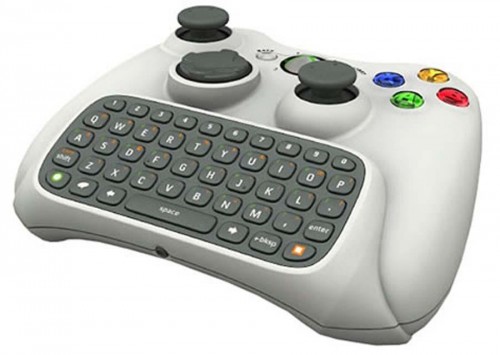Tuesday, July 20
July 20, 2010Thursday, July 22
July 22, 2010A man stands in front of an arcade pinball machine at Pocket Change inside Southland Mall, patiently watching the small, silver ball’s every move.
“Got to keep your eye on it at all times,” he said, never taking his eyes off the machine.
Inside the mall’s arcade room stands several of these vintage relics – big, box-like structures that catch one’s eye with their massive frame and flashy lights, before eventually catching their quarters, too.
But these arcade structures are a dying breed – a sign of the changes in video game systems from their early 1980s debut to now.
What was once a source of simplistic fun has now become a complex training mechanism for several athletes, including many in the Tri-parish area.
For some, video games are actually not a game anymore. They’re also a career resource.
Take Galliano native Hal Martin for example.
Martin is a racecar driver in the ARCA Racing Series presented by Re/Max and Menards.
In his sport, video games are a very valuable tool due to the high costs and manpower it requires to physically practice.
“We’re not like other sports,” he said. “We can’t just pick up a basketball and shoot some hoops or run some drills like they can in other sports. It’s tough to get in a racecar and go and spend some time on a track.”
So to combat that challenge, Martin and other racecar drivers own a computer software program that enables drivers to learn the nuances of a track that may be 1,000 miles from the comforts of his home.
“It’s not fully equivalent to getting in the car and feeling the racetrack,” he said. “But, video games are a huge part of our preparation, definitely.”
The game Martin and most drivers use is called “NASCAR Racing: 2003 Season,” for PC.
He said it’s sold to anyone who wishes to buy it, and professional racers often race online against people in the general public.
“It’s very, very realistic. Until people fully experience it, they don’t really know just how awesome it is. As far as getting the lines down on the racetracks, it’s so realistic. With every racetrack, you ride on different places on the track. So we come in and use the computer and get to feel each track.”
How realistic is realistic?
“If there’s a small bump on a track, it’ll be on the video game,” Martin said. “So it just gives you that little bit of a heads-up before you even get to the track. It’s a great tool to use.”
In other, more physically tolling sports, video games are also evolving into a studying tool.
The LSU football team adopted the use of this gaming technology midway through last season.
XOS Technologies and EA Sports created the game the Tigers use. The software tracks a team’s tendencies in different down and distance situations throughout a game and a season.
From there, LSU can practice running plays (with their full playbook on the game) against a defense with the same tendencies of a Florida, Alabama or a Tennessee.
“Gary Crowton uploaded our full playbook onto the game – every formation and every variation of every play,” said LSU video coordinator Doug Aucoin. “Being able to present that onto the screen really helps us teach the offense to some of the younger guys in the program.”
And, of course, the plays a defense will run can be controlled, too, as LSU is able to upload what plays they want their opponents to run, as well.
Once the software is put into motion, using “EA Sports’ PlayAction Simulator,” what evolves is a customized film session where players can prepare for opponents by studying what happens with these digitalized players.
“It’s not about whether you score a touchdown or whether you complete a pass on the game,” Aucoin said. “It’s just a great studying tool.”
When a play is brought into action, Aucoin said coaches are able to pause the action at various points to allow a player to see what is happening.
“You can pause the video and pop up a multiple choice question to the player like ‘What coverage is the defense in?’ or ‘What direction is the blitz coming from?'” he said. “You can tell the answer to that by where the safeties are stacked or what the linebackers are doing. … And that’s what we want them to be able to see.”
After reading the defense, Aucoin said quarterbacks are quizzed on their progression of receivers on a particular play – every angle of every play is covered.
“It’s mental reps,” he said. “That’s what you’re looking for. It’s the same type of thing you look for when you’re running practice. It’s our offense against their defense. But the thing is that in practice, only one quarterback can take a rep at a time. Here, we can bring them all in. They can all do this simulation.”
Outside of the confines of the LSU Football Operations Facility, several athletes still do play at home – just for fun and recreation.
With the release of EA Sports’ “NCAA Football ’11,” this past Tuesday, several athletes in the Tri-parish area, and worldwide, have taken to the virtual gridiron.
One of those players is Louisiana Tech standout and Houma native Phillip Livas.
Livas, who is featured on the game with the Bulldogs, said just being on a video game at all is a “dream come true.” But he also explained the lessons he learns with the controller in his hand help him on during the season.
“It does help,” he said. “Because you can learn how to read the defense. For me, I just picture it as if it’s a real-life game. I’m just trying to go out there and make a lot of big plays.”
Former LSU football player and current professional track and field athlete Xavier Carter agrees with Livas’ statement.
He said that while he doesn’t play sporting games much now that he’s no longer into football, he thought the games were a valuable tool when he did play.
“It helps your hand-eye coordination, and it helps you stay competitive,” Carter said. “It also helps you with your critical thinking and problem solving, depending on what games you play and the scenarios and situations you’re in.”
But while some sports reap the benefits of virtual technology, others still do lag behind. Where hand-eye coordination is one thing, soccer requires foot-eye coordination. Because of that, former LSU All-SEC soccer player Melissa Clarke said she believes the games have a minimal impact on her sport.
“It may possibly help to make you a smarter soccer player, because you can repeat soccer scenarios over and over,” she said. “But a video game only allows you to move your fingers. You’re missing a key component of what real practice and repetition is all about.”
The former LSU standout said that while seeing things visually are nice, a dominant soccer player must be able to act on the fly.
“The thing is, 95 percent of soccer is freestyle, really – reading the play and taking an educated guess on what you think is going to happen next,” she said. “In these games, you can put the settings where the game automatically tackles and prevents defensive breakdowns for you. … it eliminates the whole guessing part of the game.”
Vandebilt Catholic standout women’s basketball player Theresa Plaisance agrees with Clarke and said she will likely not be relying on virtual reality to help her advance in her career at LSU.
“I’d like to think that when I play, I’m helping my hand-eye coordination,” she said. “But I’m not really sure about that.”
Regardless of the side of the spectrum an athlete or a coach is from, Aucoin said whether a person improves is based on one thing – effort.
“It’s all about what you put into it,” he said. “Is it the same as a physical repetition? No. But I don’t think there’s any doubt it can help prepare you to have more effective repetitions in the real thing.”















